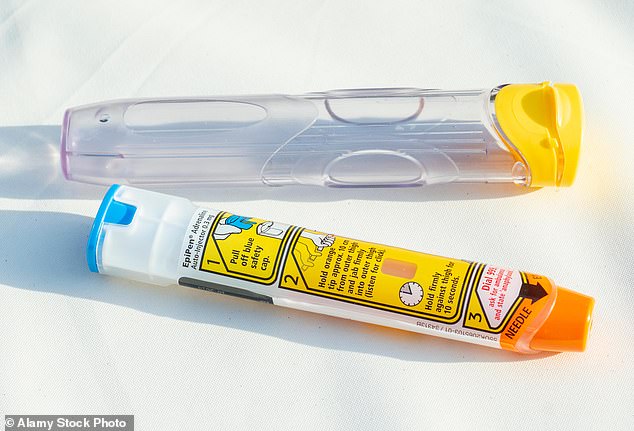A British teenager tragically died after suffering sudden anaphylactic shock following a meal at a small pizzeria while on holiday with her family in Rome last week.
The 14-year-old, who suffered from a severe peanut allergy, fell ill a few minutes after leaving a restaurant in the Gianicolense neighborhood of the Italian capital, located a few steps from his bed and breakfast, on the night of October 24.
When the family returned to their accommodation, the teenager could barely breathe.
Paramedics arrived at the scene and rushed her to San Camillo Hospital, but upon arrival she was declared dead.
Prosecutors and health inspectors are now investigating the case to determine whether the restaurant’s owners may be guilty, suspecting that the girl died from an allergic reaction caused by a “packaged dessert,” according to Corriere della Sera.
The 14-year-old boy, who suffered from a severe peanut allergy, fell ill a few minutes after leaving a pizzeria in the Gianicolense neighborhood of the Italian capital.

The tragedy unfolded during the family’s first night in Rome last Thursday, just hours after their flight landed.
The family insisted that their daughter was extremely attentive to her allergy and usually informed restaurants of her dietary needs.
The tragedy unfolded during the family’s first night in Rome last Thursday, just hours after their flight landed.
They had arrived in the capital for a week-long stay during which they planned to visit the world-famous sights, but first decided to have dinner at a nearby pizzeria before beginning their trip in earnest.
The family meal was simple: a few slices of pizza, drinks and desserts to finish.
But as they left the restaurant and began the quick journey back to their B&B, the girl began to feel considerable discomfort and, by the time they returned to the accommodation, she was suffering an attack of anaphylaxis.
Her panicked parents called for help and alerted the B&B staff, who immediately contacted emergency services.
When the paramedics arrived, the teenager was unconscious and barely breathing, and by the time she arrived at the San Camillo hospital she had already died.
Initial investigations suggest that the dessert she had consumed contained traces of peanuts, to which the girl was very allergic.
According to her family, the teenager had always been vigilant about her allergy, meticulously checking food labels and making sure restaurant staff were informed about her condition.
It is unclear whether restaurant staff had been informed of his allergy on this occasion.
It is also unclear whether the girl had access to an EpiPen, a device often used by people with severe allergies to treat anaphylaxis.
The incident sparked a manslaughter investigation, in which prosecutors and local health authority inspectors reviewed the restaurant’s allergen labeling and safety practices.
The case revolves around whether the dessert contained peanuts or traces of them and, if so, whether the restaurant did not take the necessary precautions after being informed of the girl’s allergy.
The family has returned to England, awaiting the results of forensic tests that will determine when they can bring his body home.
MailOnline has contacted the FCDO for comment.

It is unclear whether the girl had access to an EpiPen, a device often used by people with severe allergies to treat anaphylaxis.
Anaphylaxis, also known as anaphylactic shock, can cause death within minutes.
It is a serious and life-threatening reaction to a trigger, such as an allergy.
The reaction can often be triggered by certain foods, including peanuts and shellfish.
However, some medications, bee stings, and even the latex used in condoms can also cause life-threatening reactions.
According to the NHS, it occurs when the immune system overreacts to a trigger.
Symptoms include feeling dizzy or faint; breathing difficulties, such as rapid, shallow breathing; wheezing; a rapid heartbeat; moist skin; confusion and anxiety and collapse or loss of consciousness.
It is considered a medical emergency and requires immediate treatment.
An EpiPen, one of the most common treatments for anaphylaxis, injects epinephrine (adrenaline) into the body to counteract severe allergic reactions.
Epinephrine can trigger relaxation of airway muscles while reducing swelling and increasing blood pressure to restore normal breathing and circulation.

